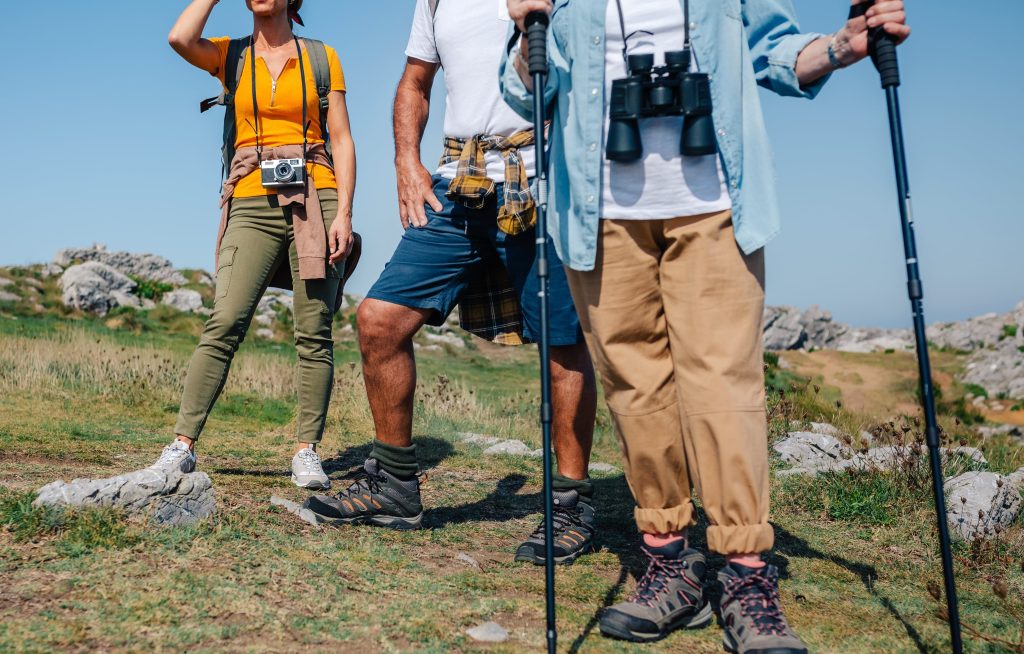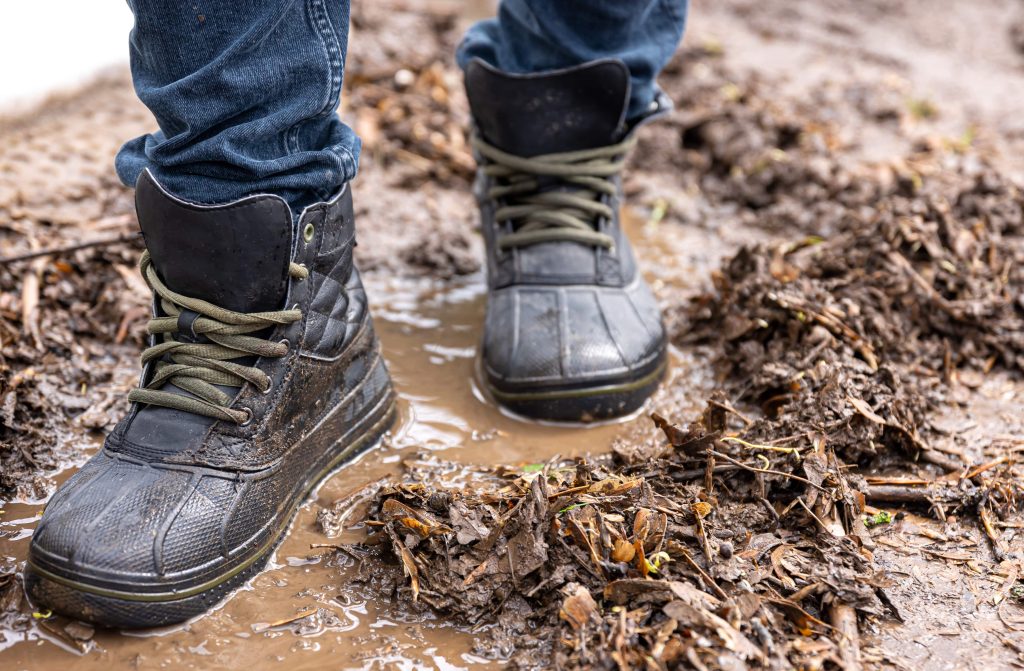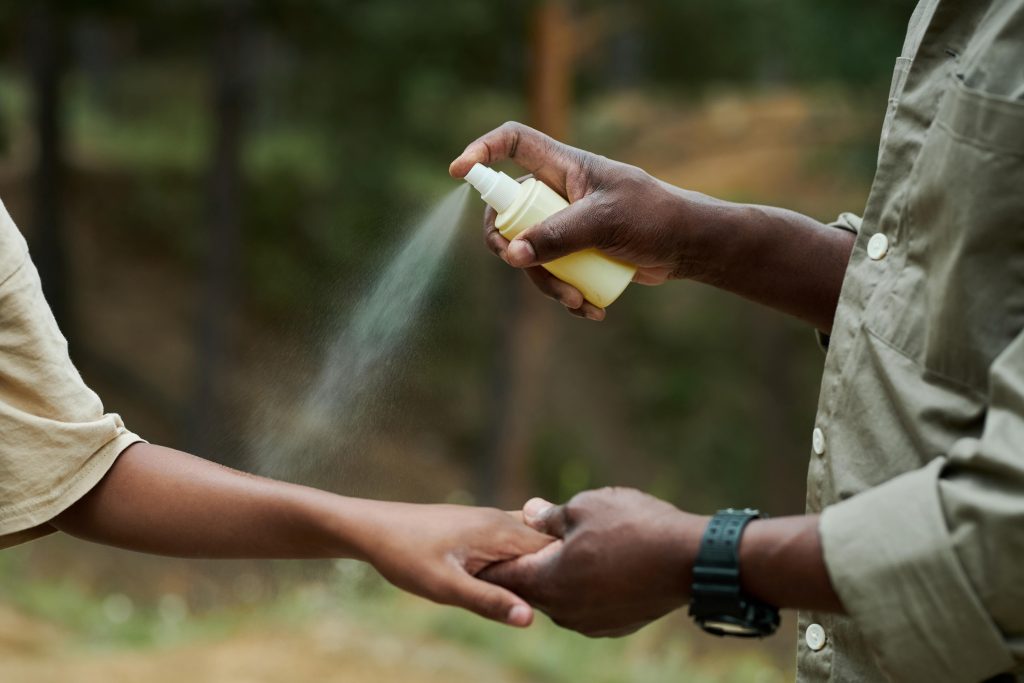Gorilla trekking in Rwanda demands targeted preparation and packing. Altitude, vegetation density, and footpath conditions determine both your mobility and physical endurance throughout the hike.
Trek durations typically range from two to six hours. In Volcanoes National Park, most routes begin near 2,500 metres above sea level and involve steep, damp descents through tangled undergrowth and volcanic rock.
Carrying the right gear is essential. Standard trekking clothes may suffice in dry weather, but the forest rarely remains dry for long.
Rainfall is frequent and unannounced. Trails shift from clay to bamboo roots, and visibility drops quickly in the morning mist. Stability often comes down to your footwear and outer layers.
This guide outlines the core items recommended for gorilla trekking in Rwanda. All advice reflects Rwanda Development Board (RDB) requirements, field-tested observations, and guidance from certified trackers and rangers.
Each component, whether a waterproof bag or insect-repellent gloves, plays a role in safety and compliance. If you’re planning a trek in Kinigi or one of the high-elevation sectors, this checklist will help you prepare accurately.
Understanding the Gorilla Trekking Environment in Rwanda
Trekking in Rwanda occurs within tropical montane forests, typically situated between 2,400 and 3,100 metres above sea level. This elevation influences temperature, oxygen availability, and humidity levels.
Volcanoes National Park contains bamboo groves, thistle grass corridors, and volcanic rock beds shaped by past eruptions. Morning mist often reduces visibility to a few metres.
Trails fluctuate in difficulty. Although briefings may indicate “moderate,” actual distance and gradient depend entirely on the gorilla group’s previous night’s nesting site. That location shifts daily.
You cannot choose your trekking route. The Rwanda Development Board allocates gorilla groups based on age, fitness, and group dynamics. Some hikers complete their trek in under three hours. Others may walk for six.
Certain paths involve sudden elevation gains, particularly in higher-altitude zones such as Sabyinyo and Karisimbi. In these sectors, the climb can exceed 500 metres without a flat stretch.
The terrain is irregular. Sections of the trail pass through loose ash, slippery roots, or rock-lined stream beds. Without steady footing and ankle support, fatigue builds quickly.
Moreover, the forest contains safari ants, thistle brambles, and stinging nettles that breach clothing gaps. Gloves, long socks, and gaiters reduce direct exposure and irritation.
If arriving from sea level or dry areas, consider resting for a full day in Kinigi. It improves oxygen adaptation and hiking capacity; most trekkers notice the difference.
What to Wear During a Gorilla Trek in Volcanoes National Park
The trekking altitude in Rwanda spans 2,400 to 3,100 metres. Conditions include wet trails, shifting undergrowth, and sudden temperature changes, especially above 2,700 metres.
1. Upper Body: Shirts and Insulating Layers
Wear long-sleeved shirts made from synthetic, breathable fabric. These materials dry quickly and shield against insects, thorns, and contact-reactive plants. Cotton is discouraged due to its moisture retention.
Opt for muted tones. Bright or patterned clothing is discouraged by park authorities, particularly during gorilla observation. Acceptable shades include grey, khaki, olive, and brown.
During cooler months (June through August, and December to early February), pack a fleece or thermal mid-layer. Mist and wind are frequent above the Kinigi sector.
2. Lower Body: Trousers and Leg Barriers
Choose full-length hiking trousers with reinforced stitching or articulated knees. Nylon-elastane blends perform well in both movement and drying speed.
Avoid shorts completely. Forest vegetation includes stinging nettles (Urtica massaica) and low-hanging thistles. Fabric coverage prevents unnecessary irritation.
Use gaiters or tuck your trousers into thick hiking socks. Safari ants respond to ground vibration and can enter shoes quickly if not blocked.

3. Footwear: Hiking Boots and Foot Stability
Select ankle-high hiking boots with aggressive tread and waterproof lining. Vibram soles or their equivalents grip well on damp clay and bamboo-covered rock.
Break your boots in before arrival. Friction from stiff soles can lead to hotspots or blisters on longer hikes.
Carry extra laces if trekking over multiple days. Overnight drying is unpredictable in the high-humidity microclimate of Musanze and the surrounding zones.

4. Rainproof Layers
Rain is possible throughout the year, though it peaks in March to May and again from mid-September to November. A waterproof jacket with sealed seams is essential.
Choose breathable models like those made from Gore-Tex or eVent fabrics. Ponchos can work, though they perform poorly in narrow vegetation tunnels or windy sections.
Avoid camouflage prints. In Rwanda, neutral attire reduces the risk of misinterpretation during ranger interactions.
5. Hand and Head Protection
Wear lightweight trekking gloves with a rubberised grip. These help while grasping branches or leaning into mossy bark and damp rock.
Reinforced knuckles or antimicrobial linings are optional upgrades.
Bring a brimmed hat or cap with a neck flap. These protect against sun and insect bites when the forest cover opens. Choose designs with an adjustable strap to counter the wind.
6. Cold-Weather Considerations
Temperatures in Kinigi can drop below 10°C in the morning. Pack thermal underlayers or a neck buff to manage early chill during pre-trek briefings.
Frost is rare, but exposure during the waiting period before group allocation often leads to discomfort.
7. Clothing for Post-Trek Comfort
Bring a change of clothes to wear after the trek. Shirts become damp, socks absorb moisture, and trousers often stain with clay or ash.
Some lodges offer drying rooms and boot services, but carrying a small dry bag adds certainty, especially during the wet season.
Essential Gear for Gorilla Trekking in Rwanda
Every permitted trek in Volcanoes National Park involves several hours on uneven, humid ground. Packing the correct gear reduces fatigue and helps maintain field compliance.
a. Daypack
Bring a 20 to 25-litre waterproof daypack with stabilising straps and padded shoulder support. It should carry water, protective layers, and basic supplies comfortably.
Some lodges offer porter services, but you may need to carry your gear during the trek. Add a rainproof cover, Volcanoes Park receives sudden rainfall, even during dry seasons.
b. Water Supply
Carry a refillable water bottle or hydration bladder with a capacity between 1.5 and 2 litres. Dehydration is frequent during high-exertion treks, especially at elevations above 2,700 metres.
You can fill up at your lodge before departure. If you are prone to muscle cramps, add oral rehydration salts to your kit.
c. Snacks and Caloric Boosters
Pack high-energy, odourless snacks. Protein bars, nuts, or dried fruit are suitable. Field conditions often limit eating opportunities, so keep items accessible but concealed.
Avoid foods with strong smells. Rangers may instruct you to eat during designated breaks, away from observation points.
d. Walking Support
Most Rwandan trailheads provide a wooden walking stick. It improves balance during ascents and descents, particularly on clay-lined slopes.
Alternatively, bring a collapsible trekking pole with a rubber tip. Avoid pointed metal ends, which may damage ground cover or roots.
e. Emergency Rain Cover
Even if you’re already carrying a jacket, pack an emergency poncho or compact rain shield inside your bag.
Choose one with sealed seams and reinforced stitching. Water damage to electronics is common in the mist belt.
f. Insect Repellent
Apply a DEET-based repellent before entering the forest. Focus on wrists, ankles, neck, and the backs of your hands.
Mosquitoes and biting flies are concentrated around bamboo openings and forest margins, especially near water.

g. Photography Equipment
Bring a camera without a flash. Flash photography is prohibited, as it disrupts gorilla behaviour.
Use protective casing or a UV lens filter. High humidity can affect internal components. Carry a spare battery because charging points may be unavailable at high-altitude lodges.
h. Waterproof Storage
Use dry bags or heavy-duty zip locks to separate wet items from electronics and documentation.
Besides rainfall, slipping into shallow mud or brushing against soaked foliage can ruin unprotected gear.
i. Compact First Aid Kit
Include essentials: blister plasters, antihistamines, bite cream, and basic painkillers like paracetamol. Add your prescribed medication and a few antiseptic wipes.
Hand sanitiser is important during the rainy season when trekking involves frequent hand contact with surfaces.
Items to Exclude
Certain items breach park regulations or interfere with wildlife behaviour. Their use may lead to confiscation or result in limited access to the trekking zone.
Do not bring flash-enabled cameras. Flash disturbs gorilla groups and violates the 60-minute viewing limit set by the Rwanda Development Board.
Drones are completely banned inside Volcanoes National Park. Their sound disrupts the environment and presents a threat to both gorillas and security operations.
Camouflage clothing should be avoided. In Rwanda, military-style prints may be misinterpreted at checkpoints or by park personnel, particularly in security-sensitive regions near the border.
Avoid using perfumes or fragranced products. Gorillas have acute olfactory receptors, and artificial scents alter their behavioural response.
Plastic bags are banned under Rwandan environmental law. Use reusable containers, stuff sacks, or fabric pouches for carrying supplies.
Keep snacks concealed. Rangers may permit eating during rest breaks, but opening food around gorillas breaches protocol.
Leave behind tripods, long telephoto lenses, or oversized camera rigs unless pre-approved. Forest passages are narrow, and such equipment often hinders movement or delays the group.
Sound equipment is discouraged. Radios, music players, or speaker devices clash with the silent tracking conditions required for observing gorillas.
GPS units and professional audiovisual gear require park-issued authorisation. If you’re uncertain whether your gear qualifies, ask your guide or operator before the briefing session.
Preparedness Is Part of the Trek
Successful gorilla trekking begins before you reach the forest. Clothing, equipment, and behaviour all contribute to your experience—and your impact on the ecosystem.
Volcanoes National Park is a carefully regulated conservation zone. Its gorilla viewing guidelines reflect years of research, ecological adjustment, and cross-sector collaboration between RDB, field rangers, and health monitors.
Packing appropriately does more than increase comfort. It helps reduce environmental strain, protects wildlife, and supports responsible ecotourism policy. Every item you carry—or choose not to—shapes that shared responsibility.
If you’re preparing for your first gorilla trek in Rwanda or refining your gear for a return visit, Inmersion Africa Journeys offers destination-specific guidance built on field knowledge.
🗓️ For tailored consultation or to secure your permit-supported trek, contact us via info@inmersionafrica.com or call (+250) 784 988 972.
